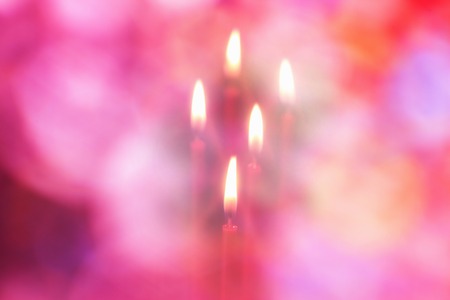Introduction to the Triple Goddesses in British Mysticism
The concept of the Triple Goddesses—Maiden, Mother, and Crone—holds a central place within British mystical traditions, weaving together folklore, myth, and spiritual practice. This triadic representation captures the cyclical nature of life and the feminine divine through three archetypal stages. In essence, the Maiden embodies youth, new beginnings, and potential; the Mother symbolises fertility, nurturing, and fulfilment; while the Crone represents wisdom, transformation, and endings. These aspects are not only symbolic of a woman’s life journey but also reflect broader themes of birth, growth, and death found throughout British mythos. Their significance extends beyond mere storytelling; they inform ritual practice and spiritual identity among modern practitioners of British paganism and Wicca. By understanding the Triple Goddesses, one gains insight into how ancient beliefs have shaped contemporary mystical thought in Britain.
2. Historical Roots and Folklore
The concept of the Triple Goddesses—Maiden, Mother, and Crone—finds deep resonance within British history and folklore. This triadic figure is not unique to Britain, but the local landscape, mythology, and cultural practices have distinctly shaped her evolution over the centuries. The earliest echoes can be traced back to pre-Christian Celtic traditions, where deities often manifested in threes. In these ancient tales, goddesses such as Brigid or the Morrigan were understood as triple-formed, embodying different phases of womanhood and natural cycles. With the Roman invasion and subsequent Christianisation of Britain, these archetypes became interwoven with both imported and local beliefs. Over time, the Maiden, Mother, and Crone archetypes began to appear in regional folklore and seasonal celebrations, subtly shifting in meaning yet retaining their core symbolic power.
Key Historical Influences
| Period | Influence on Triple Goddesses |
|---|---|
| Pre-Roman Celtic Era | Tripartite goddesses reflected in deities like Brigid and Morrigan; strong focus on nature’s cycles. |
| Roman Britain | Integration of Roman mother goddesses (e.g., Matronae) with local triads; syncretic religious practices. |
| Christianisation (Post-Roman) | Subtle transformation of goddess figures into saints or folk characters; reinterpreted within Christian frameworks. |
| Medieval & Early Modern Folklore | Persistence of triple motifs in fairy lore, seasonal festivals (such as May Day), and rural traditions. |
Folkloric Evolution Across Regions
The representation of the Triple Goddesses varies by region in Britain. In Cornwall, for example, local stories speak of three wise women or witches guiding communities. In Scotland, legends surrounding the Cailleach—a crone-like winter figure—are balanced by tales of youthful spring maidens. English countryside customs often reference the harvest mother or queen, echoing the central motif of fertility and renewal. These variations highlight how local identity shapes interpretations of the divine feminine trinity.
Cultural Adaptation Over Time
As society changed through industrialisation and urbanisation, references to the Triple Goddesses became less overt but remained embedded in folk customs, literature, and even nursery rhymes. Today’s British mysticism often draws consciously from this layered heritage, reimagining the Maiden, Mother, and Crone to reflect contemporary values while honouring their historical roots.

3. The Maiden: Youth, New Beginnings, and British Symbolism
The archetype of the Maiden, the first aspect in the Triple Goddess trinity, holds a place of profound significance within British mysticism. She is the embodiment of youth, purity, and potential, representing the dawn of life and the promise inherent in new beginnings. In the British Isles, her presence is felt not only in folklore but also through the rhythms of the land itself—her spirit woven into rolling green meadows, bluebell woods, and the gentle emergence of spring after a long winter.
Roles and Attributes of the Maiden
The Maiden is often portrayed as lively, curious, and free-spirited—qualities that echo through tales from Cornwall to the Scottish Highlands. She is associated with innocence and discovery, yet there is an undercurrent of burgeoning power: she stands on the threshold between childhood’s end and womanhood’s responsibilities. Her symbols are many and distinctly local: primroses and hawthorn blossom mark her arrival in English hedgerows; in Welsh myth, she appears as Blodeuwedd, the woman made from flowers. The Maiden’s lunar association is with the waxing moon—a time for planting hopes and nurturing aspirations.
The Maiden in British Landscapes
Across Britain’s landscapes, seasonal rites honour her youthful energy. Beltane celebrations in May see young women crowned as May Queens, a living reflection of the Maiden’s vitality. These rites are more than pageantry—they are acts of communal renewal, calling forth fertility and good fortune from earth and sky alike. The green hills of Glastonbury, steeped in Arthurian legend, are said to be places where her presence lingers most strongly at sunrise when dew glistens on grass blades and everything feels possible.
Representation Through Seasonal Rites
The cyclical nature of British seasons ensures that the Maiden archetype remains ever relevant. From snowdrops piercing late winter frost to exuberant Maypole dances, each ritual underscores her role as a harbinger of change and hope. In local folklore, she is sometimes glimpsed as a white lady or fairy maiden—ephemeral figures who guide or challenge those who cross their path. Such stories serve both as cautionary tales and reminders that every ending carries within it a seed for new growth.
In summary, the Maiden’s archetype in British mysticism is not merely a symbol of youthful innocence but a dynamic force connected deeply to landscape and tradition. Her presence invites individuals to embrace beginnings with courage and curiosity—a theme echoed throughout Britain’s mythic past and present-day seasonal observances.
4. The Mother: Fertility, Nurturing, and Community
Within the British mystical tradition, the Mother aspect of the Triple Goddesses stands as a powerful symbol of abundance, support, and continuity. She embodies the nurturing force that sustains life, not only in a biological sense but also within the wider fabric of society. In both rural and urban contexts across Britain, her influence is palpable, resonating through folklore, seasonal rituals, and communal practices.
The Mother in Rural British Life
Historically, rural Britain has revered the Mother Goddess as an emblem of fertility and agricultural prosperity. From ancient earthworks dedicated to fertility goddesses to May Day celebrations honouring new life and growth, the presence of the Mother is woven into the landscape itself. She is invoked at harvest festivals such as Lammas (Lughnasadh), where communities gather to give thanks for bountiful crops—a tradition that persists in many villages today.
Key Aspects of the Mother in Rural Contexts
| Aspect | Description | Modern Echoes |
|---|---|---|
| Fertility | Blessing fields and livestock for abundance | Harvest festivals, community gardening |
| Nurturing | Caring for family and neighbours | Village fetes, mutual aid societies |
| Continuity | Passing on traditions and land stewardship | Heritage preservation groups, local lore workshops |
The Mother in Urban British Life
In urban settings, while the landscape may differ, the essence of the Mother remains integral. Here, she is manifest in the creation of supportive networks—neighbourhood watch schemes, food banks, and community centres all echo her nurturing spirit. The tradition of street parties for national events or local causes can also be traced back to communal gatherings that honour shared bonds and continuity.
The Evolving Symbolism of the Mother
The symbolism of the Mother goddess adapts to contemporary realities. In modern Britain, she might represent leaders who champion community cohesion or individuals fostering inclusivity in diverse city neighbourhoods. Her role has expanded beyond gendered expectations; anyone who provides support and ensures continuity within their community can be seen as channeling this archetype.
Cultural Reflections: Rural vs Urban Interpretations
| Setting | Traditional Expression | Contemporary Example |
|---|---|---|
| Rural | Harvest rituals, storytelling around hearths | Allotment co-ops, village halls hosting events |
| Urban | Mothers’ meetings, charity bazaars | Parent support groups, urban gardening projects |
The enduring image of the Mother within British mysticism bridges generations and geographies. Whether through sowing seeds in a country field or building networks in a bustling city estate, her energy sustains community life and assures its future.
5. The Crone: Wisdom, Endings, and Transformation
The Crone, as the final aspect of the Triple Goddesses, occupies a unique and revered position within British mysticism. Often shrouded in mystery and sometimes misunderstood, she represents not only the inevitability of endings but also the profound wisdom that comes with experience and age. Her associations extend to death and rebirth, echoing the cyclical nature of life so deeply embedded in British folklore.
Embodiment of Wisdom
The Crone is frequently depicted as an older woman whose years have granted her insight beyond the reach of the Maiden or Mother. In British tradition, she is often seen as a wise woman or witch—think of figures like Morgan le Fay in Arthurian legend or the mysterious Cailleach from Scottish lore. These characters are not merely harbingers of endings; they guide others through transitions, offering counsel forged by hardship and time.
Death and Rebirth
While the Crones link to death is clear—she presides over endings, farewells, and letting go—her role does not end there. British myths often portray her as a guardian at thresholds, where death is but a prelude to renewal. The wintery Cailleach, for example, brings the cold season but also prepares the world for spring’s return. The Crone thus embodies transformation: she teaches that loss paves the way for growth and that every ending contains seeds of new beginnings.
Appearances in British Myths and Literature
The archetype of the Crone appears throughout British literature and storytelling. In Shakespeare’s plays, wise women and prophetic hags offer crucial warnings or insights—the witches in Macbeth, for instance, encapsulate both fearsome power and deep knowledge. Folk tales from Cornwall to the Highlands are replete with elderly women who dispense cryptic advice or magical aid. Far from being mere symbols of decline, these figures reinforce the notion that wisdom is hard-won and essential to communal survival.
In sum, the Crone’s presence in British mysticism is multifaceted: she is a symbol of wisdom gained through experience, a mediator between life and death, and a transformative force within myth and literature. Her enduring influence reminds us that endings are not just conclusions but vital moments of change that prepare us for what comes next.
6. Influence on Modern British Spirituality
The Triple Goddesses archetype—Maiden, Mother, and Crone—has left a pronounced mark on the landscape of modern British spirituality, especially within pagan, Wiccan, and mystical circles. In contemporary Britain, the enduring image of these three faces of the divine feminine offers both structure and inspiration for those seeking spiritual connection beyond traditional Christian frameworks.
Pagan Revivals and Goddess Worship
Modern British pagans have actively embraced the Triple Goddesses as central to their cosmology and ritual practice. The cyclical nature of these archetypes resonates with the rhythms of the natural world so cherished in British paganism. Seasonal festivals—such as Beltane, Lammas, and Samhain—are often oriented around the transitions between Maiden, Mother, and Crone, embedding these figures into the annual wheel of the year. This has fostered a sense of continuity with ancient Celtic traditions while adapting them to fit contemporary life.
Wicca’s Adaptation of the Triple Goddesses
British Wicca, in particular, has canonised the Triple Goddess concept since its emergence in the mid-20th century. Gerald Gardner and other founders drew explicitly from folkloric and literary sources to weave Maiden, Mother, and Crone symbolism into ritual structure and liturgy. In Wiccan covens across Britain today, the goddess is invoked in her triple form during esbats (lunar rituals) and sabbats (solar festivals), reflecting phases of both womanhood and lunar cycles—a distinctly British fusion of mythos and nature-based spirituality.
Mystical Practices and Personal Transformation
Beyond organised groups, independent mystics throughout Britain use the Triple Goddess motif for personal development. Many find that working with each aspect—embracing new beginnings as the Maiden, nurturing growth as the Mother, and welcoming wisdom as the Crone—provides a practical framework for self-reflection and transformation. Meditation, journaling, and artistic expression are common methods for engaging with these energies.
In this way, the Triple Goddesses continue to inform modern British spirituality not merely as distant mythological figures but as living symbols guiding daily practice. Their presence bridges ancient lore with present-day needs for identity, community, and meaning—demonstrating a uniquely British blend of reverence for tradition alongside creative reinterpretation.
7. Conclusion: Enduring Legacy of the Triple Goddesses
The influence of the Triple Goddesses—Maiden, Mother, and Crone—remains deeply woven into the fabric of British mysticism and wider cultural consciousness. Their archetypal presence extends far beyond folklore and pagan traditions; today, they continue to shape how people in the UK understand womanhood, transformation, and life’s cyclical nature. From local storytelling circles to modern spiritual practices, these three aspects are invoked as symbols of empowerment, resilience, and continuity.
Contemporary Britain sees a revival of interest in the divine feminine and ancient wisdom traditions, with the Triple Goddesses serving as both spiritual guideposts and cultural touchstones. Festivals celebrating seasonal changes often reference their imagery, while literature and art revisit their stories to reflect on issues such as gender roles, ageing, and personal growth. The Maidens’ curiosity, the Mothers’ nurturing strength, and the Crones’ hard-won knowledge offer valuable metaphors for navigating modern challenges.
In everyday language and community rituals across the UK—from rural village gatherings to urban creative workshops—the Maiden, Mother, and Crone provide frameworks for intergenerational dialogue and mutual support among women. Moreover, their enduring relevance is visible in feminist movements that seek to reclaim narratives about femininity, power, and identity.
Reflecting on their continued presence reminds us that these archetypes are not static relics but living symbols that adapt to new cultural contexts. They inspire self-reflection and collective action alike, encouraging individuals to honour each phase of life’s journey while fostering a sense of belonging within a wider historical tapestry.
Ultimately, the legacy of the Triple Goddesses is one of resilience and reinvention—a testament to their timeless ability to resonate with changing British society. Their stories invite ongoing exploration and reinterpretation, ensuring that the wisdom of Maiden, Mother, and Crone will endure for generations to come.


